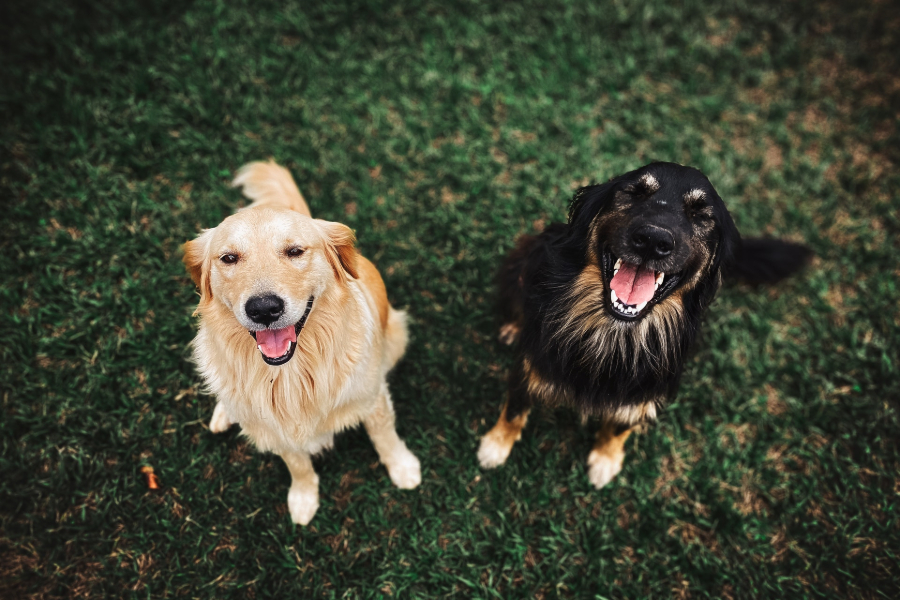
When it comes to dog breeds that are less likely to bite, you’ll find that there are a variety of different options to choose from.
From the cuddly and loveable teddy bear breeds to the independent and playful kinds, there is a perfect dog breed out there for everyone.
However, it is important to remember that no matter which breed you decide on, it is always important to properly train your dog and socialize them with other people and animals.
Dog Breeds That Are Less Likely to Bite
Now that we know how to properly greet a new dog, let’s take a look at 8 breeds that are considered less likely to bite.
1. Poodle
Poodles are one of the most popular toy breeds and are known for being gentle, loving, and friendly towards both humans and other animals.
They are excellent family dogs and make great companions for people of all ages.
2. Bichon Frise
The Bichon Frise is also a popular toy breed. They are very friendly, playful, and thrive when they are around their family.
These dogs do well in households with children and other pets.
3. Golden Retriever
The Golden Retriever is one of the most popular breeds for good reason – they are gentle, loving, and make great family pets.
They are also very friendly towards other animals and love to play fetch and swim.

4. Bulldog
Bulldogs are known for being calm, docile, and gentle with both children and adults.
Bulldogs also tend to be quite lazy, so they make great companions for people who lead a more relaxed lifestyle.
5. Beagle
Beagles are another breed that is known for being gentle and loving towards their family. They are also quite playful and enjoy playing with children.
Beagles typically get along well with other animals and love to spend time outdoors.
Most importantly, they only bite in very rare cases where they might be in danger.
6. Pembroke Welsh Corgi
Originating in the UK, Corgis are one of the smallest breeds on this list- weighing an average of 25 pounds.
They tend to be very intelligent and energetic around children and make great family pets.
They generally like to play outside and enjoy exercising daily rather than biting!
7. Boston Terrier
Boston Terriers originated in Boston, MA and were used for dog fighting before eventually becoming popular household pets due to their calm and gentle nature.
These dogs often win the hearts of people who don’t normally like dogs because they thrive when surrounded by family members.
Bostons also get along well with other animals, despite being used for fighting in the past.

8. Cavalier King Charles Spaniel
Similar in appearance to the Cocker Spaniel, these dogs are known for being friendly, gentle, and playful and make great companions for children.
Cavaliers also enjoy spending time outdoors and love to go for walks and rarely bite other animals or humans.
How to Greet a New Dog
It is important to review some key points about how to greet a new dog.
Greeting a new dog can be stressful if you are not prepared or don’t know what you should do when meeting for the first time.
The last thing you want to do is cause any harm to yourself or your new furry friend – no one wants an unexpected visit from the emergency room!
So to avoid any mishaps, have these do’s and don’ts in mind before greeting a new pooch.
Do:
Be calm: Don’t let your excitement get ahead of you when meeting a new four-legged family member for the first time.
Dogs pick up on our emotions, so if you are calm and collected, they will likely be less stressed as well.
Be gentle: When petting a new dog for the first time, start slowly and let them get used to your touch.
Dogs have a sensitive sense of smell, so they will be able to tell how you feel about them just by smelling you.
Don’t:
Stare at them: This can make dogs feel uncomfortable and stressed. Just like when we are being stared at, dogs don’t enjoy it when people are looking at them intensely.
Approach from behind: Approaching a dog from behind can be quite frightening for them and could result in an unwanted bite.
Always approach a new dog head-on to ensure that they feel comfortable with your presence.
Training Your Dog Not to Bite
While there are certain breeds that are known for being less likely to bite, any dog can be trained not to do so (ideally from the time they are a puppy).
If the owner takes the time and effort to practice proper training with their dog, anything is possible!
To teach your dog that biting is bad, try different strategies to see which method works best for you and your pooch.
For example, if some of the more traditional training methods do not work, try some different ones like clicker training.
These methods might be better suited to teach your dog not to bite.
Lastly, the key to avoiding biting behavior in an adult dog is to ensure they have plenty of socialization with other dogs and humans as a puppy.
You should start socializing as soon as possible so that your dog can get used to being around strangers and other animals without biting them.
Final Thoughts
So if you are looking for a new furry friend that is less likely to bite, consider one of the breeds on this list!
Just remember to always be cautious when meeting any dog for the first time and always obey any warning signs that they may be displaying.
Notice: Trying to get property 'term_id' of non-object in /home/wanderly/public_html/barkingtimes.com/wp-content/themes/carbonate-child/partials/recommended.php on line 3

